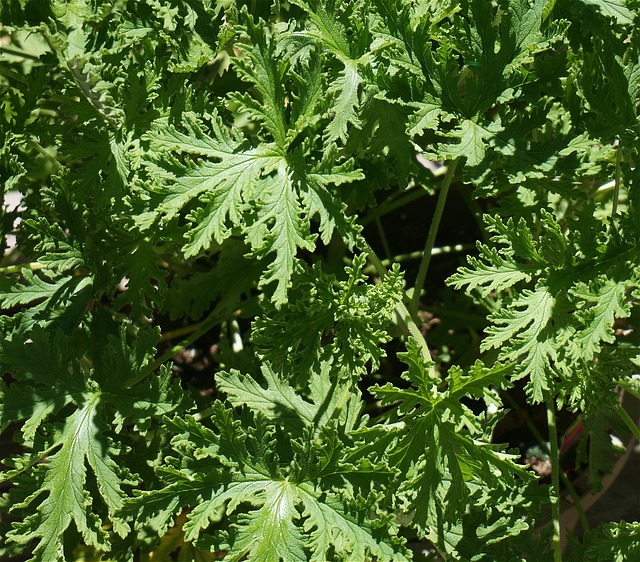Citronella plants, known for their pleasant lemony fragrance and natural mosquito-repelling properties, are a popular addition to gardens and outdoor spaces during the warm months. However, many gardeners and plant enthusiasts wonder if these delicate plants can withstand the harsh conditions of winter. In this comprehensive article, we will explore the factors that influence a citronella plant’s ability to survive winter and provide valuable tips and guidance on how to protect and care for your citronella plant during the colder months.
Understanding the Citronella Plant
Before delving into the intricacies of winter survival, let’s first understand the citronella plant (Cymbopogon nardus) and its characteristics. Citronella plants are not a single species but rather a common name for several plants in the Cymbopogon genus. The two primary species used for their mosquito-repelling properties are Cymbopogon nardus and Cymbopogon winterianus. These plants are known for their high citronellal and citronellol content, which gives them their distinctive lemony scent and insect-repelling qualities.
Citronella plants are typically grown as perennials in USDA hardiness zones 9 to 11, where they can thrive year-round. In these zones, the plants can be grown in the ground as landscape plants or in pots, making them a popular choice for patios, decks, and outdoor living spaces. However, for those living in regions with colder winters, the question of whether citronella plants can survive the winter becomes crucial.
Factors Affecting Winter Survival
The ability of a citronella plant to survive winter largely depends on various factors, including its geographical location, climate, and how it is grown and cared for. Let’s delve into these factors in detail:
1. Hardiness Zones
One of the most critical factors influencing a citronella plant’s winter survival is its hardiness zone. The United States Department of Agriculture (USDA) has established a hardiness zone map that divides the country into zones based on the average minimum winter temperatures. Citronella plants are naturally suited to warmer climates and are considered hardy in zones 9 to 11, where the winter temperatures rarely drop below freezing.
- Zone 9: Citronella plants thrive in zone 9, where the minimum winter temperature ranges from 20°F to 30°F (-6°C to -1°C).
- Zone 10: In zone 10, citronella plants enjoy even milder winters, with minimum temperatures between 30°F to 40°F (-1°C to 4°C).
- Zone 11: Zone 11 is the ideal environment for citronella plants, as it rarely experiences freezing temperatures, with minimum winter temperatures staying above 40°F (4°C).
If you live in one of these zones, your citronella plant can likely survive the winter outdoors with minimal protection. However, for gardeners in colder regions, additional care and precautions are necessary.
2. Microclimates
Microclimates within your garden or outdoor space can significantly impact a citronella plant’s chances of winter survival. A microclimate is a localized area within a larger climate zone that has its unique temperature, moisture, and wind conditions. Factors such as proximity to buildings, bodies of water, and the presence of heat-absorbing materials like concrete or stone can create microclimates that are more favorable to plant survival.
For example, a citronella plant placed next to a south-facing wall or near a large body of water may experience milder winter temperatures than the surrounding area, allowing it to survive even in colder zones. To take advantage of microclimates, strategically position your citronella plants in your garden or outdoor space to minimize their exposure to harsh winter conditions.
3. Plant Size and Health
The size and overall health of your citronella plant play a crucial role in its winter survival. Larger, well-established plants tend to be hardier and better equipped to withstand cold temperatures than smaller, younger plants. Therefore, if you plan to overwinter your citronella plant, it’s advisable to allow it to grow and establish itself during the warm months.
Ensuring that your citronella plant is healthy and free from diseases or pests is equally important. A stressed or weakened plant is more susceptible to winter damage. Regularly inspect your citronella plant for any signs of disease or infestation and address any issues promptly.
4. Container vs. Ground Planting
Whether you have your citronella plant in a container or planted directly in the ground can influence its ability to survive the winter. Container-grown citronella plants have the advantage of mobility, allowing you to move them to more protected areas or indoors during periods of extreme cold. In contrast, plants in the ground are more exposed to the elements and may require extra care to survive.
If you live in a colder climate and want to keep your citronella plant alive through the winter, consider planting it in a container. This way, you can move it indoors or to a sheltered location when temperatures drop significantly.
Winter Care and Protection
For those living in regions with colder winters, protecting your citronella plant during the winter months is essential. Here are some steps you can take to increase its chances of survival:
1. Pruning
Before the onset of winter, prune your citronella plant to remove any dead or diseased foliage. Pruning encourages new growth and helps the plant divert its energy toward healthy branches and leaves. Trim back any leggy or overly tall growth to promote a more compact and robust structure.
2. Repotting
If your citronella plant is in a container, consider repotting it into a slightly larger container before winter. This provides more room for root growth and helps insulate the plant from temperature fluctuations. Use a well-draining potting mix to ensure proper aeration and prevent waterlogged roots, which can lead to root rot.
3. Mulching
For plants in the ground, apply a thick layer of organic mulch around the base of the citronella plant. Mulch acts as insulation, protecting the roots from extreme cold and temperature fluctuations. Be sure to keep the mulch away from the plant’s stem to prevent rot and fungal issues.
4. Bring Indoors
If you’re concerned about the survival of your citronella plant during the winter, one of the safest options is to bring it indoors. Before doing so, thoroughly inspect the plant for pests and disease to prevent them from spreading indoors. Place the plant in a sunny location, such as a south-facing window, and continue to water it sparingly during the winter months, allowing the soil to dry slightly between waterings.
5. Provide Heat
In exceptionally cold climates, consider using a heat source to keep your citronella plant warm. This can be achieved with a space heater or heat lamp in a well-ventilated area. Be cautious with heating devices, as they can pose a fire hazard if not used properly. Monitor the temperature closely and ensure the plant does not get too hot.
6. Protect from Frost
If frost is a concern, cover your citronella plant with a frost cloth or blanket during particularly cold nights. This can help trap heat and prevent frost from forming on the plant’s foliage. Be sure to remove the covering during the day to allow the plant to receive sunlight and air circulation.
7. Regular Monitoring
Throughout the winter, it’s essential to regularly monitor your citronella plant’s condition. Check for signs of stress, such as drooping or yellowing leaves, and adjust your care routine accordingly. Avoid overwatering, as plants tend to require less moisture during the dormant winter period.
Springtime Recovery
As the days grow longer and temperatures begin to rise, your citronella plant will gradually come out of its winter dormancy. Here are some steps to help your plant recover and thrive in the spring:
1. Gradual Acclimatization
If you moved your citronella plant indoors for the winter, don’t rush to place it outside as soon as the weather warms up. Instead, gradually acclimate it to outdoor conditions by placing it in a shaded, protected area for a few hours each day. Increase the exposure gradually over a week or two to prevent shock.
2. Pruning and Maintenance
Once the danger of frost has passed and your citronella plant is fully acclimated to outdoor conditions, prune it again to remove any dead or damaged growth. This will stimulate new growth and help the plant maintain its shape.
3. Fertilization
In the spring, provide your citronella plant with a balanced, slow-release fertilizer to encourage healthy growth. Follow the manufacturer’s instructions for application, and avoid over-fertilizing, which can lead to nutrient imbalances.
4. Pest and Disease Control
Continue to monitor your citronella plant for pests and disease in the spring and take prompt action if any issues arise. Regularly inspect the leaves and stems for signs of trouble, and use appropriate treatments or pesticides as needed.
Alternatives for Colder Regions
For gardeners in extremely cold climates where it’s challenging to keep citronella plants alive through the winter, there are alternative options to enjoy the benefits of citronella without the hassle of overwintering. Consider these alternatives:
1. Citronella Candles and Oils
Citronella candles and oils are readily available and provide effective mosquito-repelling properties without the need for live plants. These products can be used in outdoor spaces during the warm months to create a mosquito-free environment.
2. Annual Citronella Plants
Rather than growing citronella as a perennial, treat it as an annual plant. Plant new citronella plants each spring and enjoy their mosquito-repelling benefits throughout the summer. When winter approaches, simply discard the old plants and start fresh in the following spring.
Conclusion
While citronella plants are naturally suited to warm climates and thrive in USDA hardiness zones 9 to 11, they can still be enjoyed by gardeners in colder regions with some extra care and attention. By understanding the factors that affect their winter survival and following the tips and guidelines provided in this article, you can increase the likelihood of your citronella plant making it through the winter and flourishing in the spring. Whether you choose to protect your plant with insulation, move it indoors, or opt for alternative mosquito-repelling solutions, citronella can be a valuable addition to your outdoor space, helping you enjoy mosquito-free evenings all season long.








